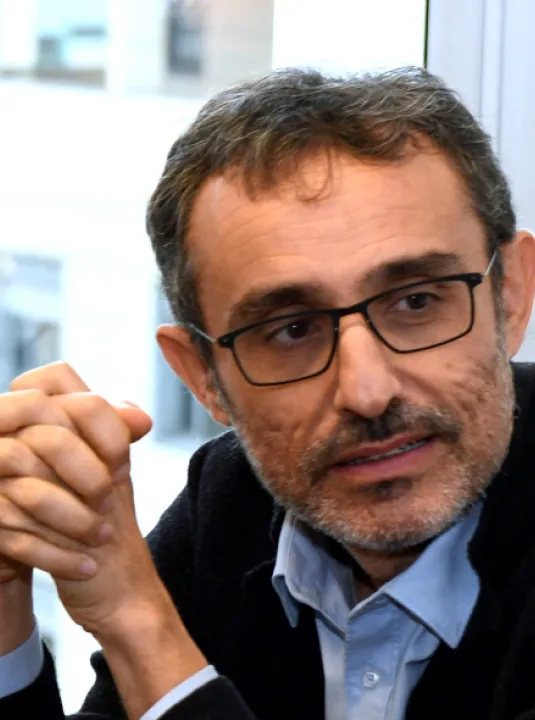
The Fragile Balance of Trust
Inflation is again at the center of economic debate, yet public understanding of it remains limited. A recent Italian survey showed that 40% of respondents are unsure whether a 1% interest rate on savings, with 2% inflation, leaves them better or worse off — a clear sign of confusion between real and nominal returns. The broader underlying issue is whether people truly understand what inflation is and what drives it.
What is inflation?
Inflation is a sustained rise in the general price level. Beneath this simple definition, however, lies a complex set of mechanisms. Four broad frameworks help explain its dynamics.
Monetary inflation
Rooted in Milton Friedman’s dictum that inflation is “always and everywhere a monetary phenomenon,” the monetary view emphasizes how the quantity of money in circulation drives inflation. For the sake of argument, consider the following thought experiment: what if money in large quantity were dropped from helicopters? This idea — popularized as "helicopter money" — reflects a widespread belief that simply expanding the availability of money could solve deeper economic pathologies. The flawed logic suggests that printing money is costless, especially in digital form, so why not credit everyone with a lot of euros and address issues such as poverty or unemployment?
Economic theory suggests that the effects of a helicopter drop of money crucially depend on expectations. Suppose that the authorities unexpectedly announced, in the morning, a helicopter money drop — €1,000 per person — making it clear that this is a purely one-off experiment. Precisely because the experiment is limited to a single occurrence, by construction it cannot have a large impact. It is a bit like throwing newspaper into a fire. Assuming that consumer prices remain unchanged, and that all of this additional money is spent, we would observe a purely temporary spike in consumption. But a spike nonetheless — and only under the crucial assumption of constant prices and a high propensity to spend. Certainly not a solution to an economic crisis.
Now suppose, alternatively, that the authorities announced helicopter money as a permanent policy. Every morning, in a fully predictable manner, helicopters fly and increase the money supply by 5% compared to the previous day. If you were a shopkeeper or an entrepreneur, what would you do in this scenario? Before going to bed, you would press a button on your computer and program a 5% price increase for the next day. It is much easier to make a profit this way than by increasing production. We can conclude that if money is permanently dropped from helicopters, it will simply lead to higher prices (i.e. inflation), leaving individuals’ purchasing power unchanged and having zero effect on consumption.
A real-world example occurred in 2020 when the Hong Kong government, facing a consumption slump, transferred $1,200 to every adult. That was effectively a “helicopter money” experiment. Some hailed it as a miracle cure for recessions, assuming people’s purchasing power would rise — if prices stayed fixed. But precisely that assumption is key: if prices rise (i.e. inflation), the real benefit of helicopter money completely vanishes.
The likely ineffectiveness of the helicopter money experiment, then, leaves us with the following question. If, in the end, something must fall from the sky in abundance, would you rather it be money — or chocolate?
Real inflation
In reality, and differently from the helicopter money example, prices adjust only gradually, due to various nominal rigidities. Two forces can drive inflation in this context. First, firms may raise markups in response to supply shocks (e.g. higher price of energy) or rising costs, passing these on as higher consumer prices. Second, and more subtly, inflation can emerge from expectations: if agents anticipate future price increases, they change their behavior today.
This is especially evident in wage negotiations. Since wage contracts are infrequent, workers anticipating higher inflation will demand higher nominal wages to protect purchasing power. These wage increases raise production costs, prompting firms to raise prices. Expectations thus become self-fulfilling: inflation today is shaped by beliefs about tomorrow. This is why central banks put great emphasis on keeping inflation expectations anchored.
Fiscal inflation
Price stability is not achieved by central banks alone, but through cooperation between monetary and fiscal authorities. While central banks control inflation via interest rates, their efforts can be undermined if fiscal policy lacks credibility. If public debt is seen as unsustainable, markets may doubt the government’s ability to maintain fiscal discipline, weakening the impact of monetary tightening. A vicious cycle can then follow: higher rates may slow the economy or cause a recession, worsening the debt-to-GDP ratio and increasing debt service costs. Even independent central banks can be constrained by irresponsible fiscal behavior. Ultimately, monetary policy depends on public confidence in future fiscal adjustment. Without credible fiscal backing, controlling inflation becomes much harder. Latin America’s economic history is marked precisely by chronic inflation driven by fiscal imbalances.
Inflation and conflict
Inflation can also stem from an underlying distributional conflict. A shock — like a spike in energy prices — can provoke opposing reactions in the labor market: firms raise prices to protect margins, while workers demand higher wages to preserve purchasing power. This triggers a wage-price spiral that satisfies neither side. The result is a dysfunctional equilibrium, like a crowd at a football match: everyone stands up to see better, but no one gains, and all are worse off. In such cases, one crude way to make people sit down is to make the match less appealing — a clearly suboptimal solution. Yet this is often what central banks do: they cool the economy by raising interest rates in order to tame inflation, while still risking a recession. A better outcome would be a cooperative equilibrium — an “incomes policy” — where wages and prices are moderated through coordinated agreements between employers and workers. Unfortunately, such coordination is politically and institutionally hard to achieve, and rarely implemented.
Inflation is a complex phenomenon — technically intricate, yet deeply felt in everyday life. While its underlying causes are often poorly understood by the general public, inflation invariably becomes salient when it surges. The electoral cycles of 2021–2023, particularly in the United States, made this clear: once inflation materializes, it rapidly becomes the dominant public concern, shaping both political discourse and voter behavior. This highlights not only the real-world relevance of inflation, but also the pressing need to deepen economic and financial literacy. Looking ahead, mounting geopolitical risks, the disruptive effects of climate change, and the rise of protectionist policies are poised to strengthen the structural drivers of inflation. These forces will cement inflation’s role as a central macroeconomic challenge in the years to come — demanding both an informed public debate and sophisticated policy responses.





